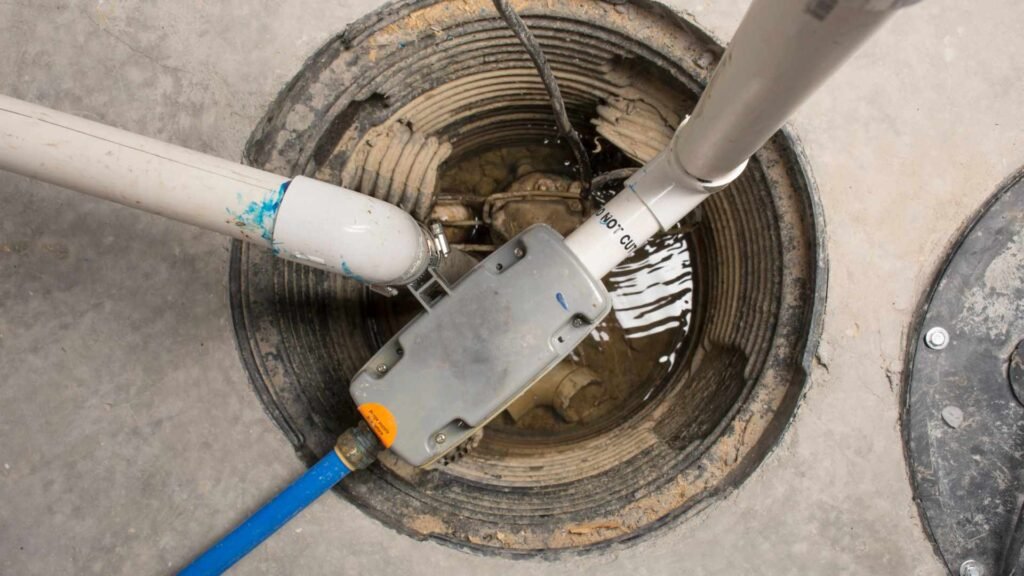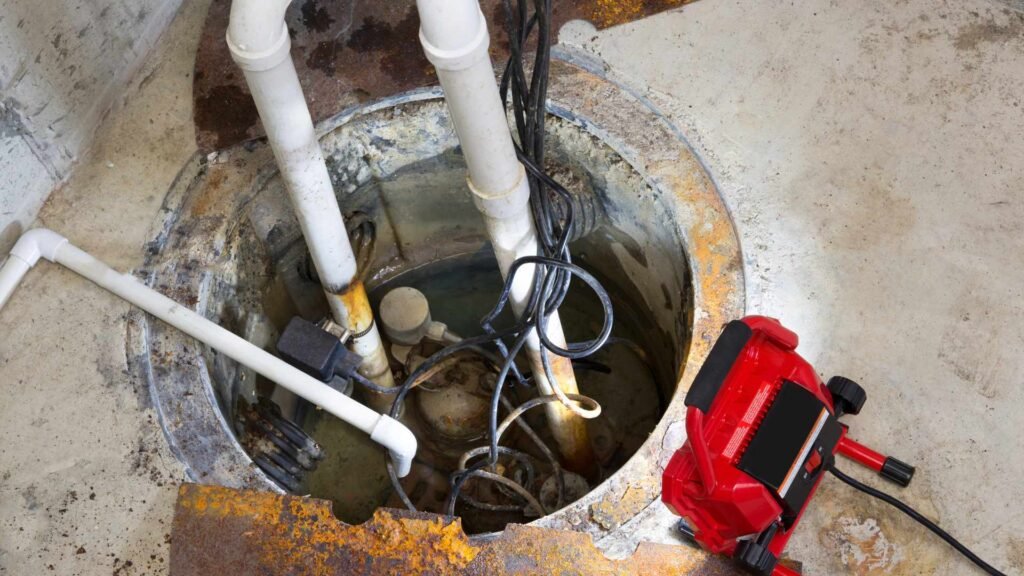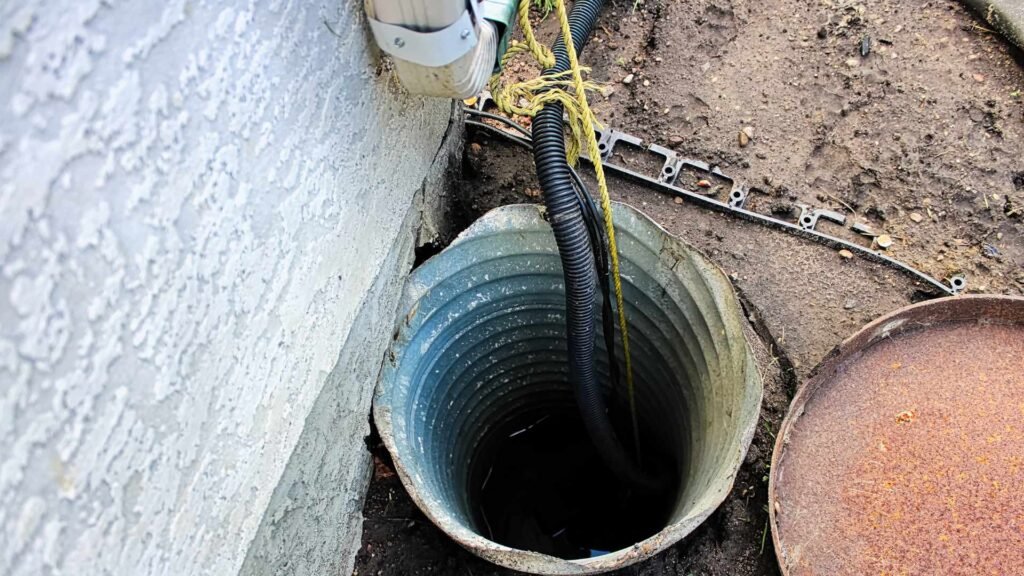Understanding the Role of a Sump Pump in Your Home
A sump pump fulfills a critical role in any property that is prone to flooding or has a below-ground-level space such as a basement or cellar. It is essentially a pump installed in a sump basin, a pit dug at the lowest part of a property. This ensures that any excess water flowing into the property out of drainage systems, water collection basins, or even rainfall, will end up in this pit. The pump then automatically activates when the water level in the basin rises above a set mark, redirecting excess water away from the property to prevent flooding. Moreover, even in properties not predisposed to flooding, a sump pump serves an invaluable role. It ensures optimal moisture levels by preventing dampness in basements. It can help alleviate damp basement issues, which are known to lead to other ancillary problems if left unattended, such as mold growth, dank smells, and structural mischief. Notably, a dry basement is a more usable space and mitigates potential health risks associated with excess humidity or moisture. Therefore, understanding the role of a sump pump will better equip homeowners to maintain optimal living conditions and protect their investment.
Key Reasons for Having a Sump Pump
The significance of a sump pump in a residential setting cannot be overstated. Fundamentally, a sump pump serves an essential role in safeguarding a property against water damage. Especially in areas prone to heavy rainfall or flooding, a robust sump pump system provides an effective defense against water influx. Homes featuring basements and crawlspaces are often susceptible to ground water accumulation, which can detrimentally affect the structural integrity of the property.
A sump pump offers not only a solution to prevent water build-up, but also aids in improving the indoor air quality. When a basement or crawlspace is damp, it can lead to the formation of mold and mildew, causing potential health risks for inhabitants. A well-functioning sump pump guards against this, ensuring the underlying areas of homes stay dry and free from these harmful fungi. Additionally, sump pumps aid in maintaining the foundation integrity by mitigating hydrostatic pressure on the home’s foundation, maintaining dryness, and further contributing to the safety and well-being of the residents.

Give Us A Call Now At (855) 789-1250

Preparation Steps for Installing a New Sump Pump
Before embarking on the process of installing a new sump pump in your home, diligent preparation is crucial to ensure a smooth and safe installation process. The first step entails an accurate evaluation of your home’s needs, taking into consideration aspects such as the size of your home, the level of water exposure and the capacity of pump best suited for the job. Following this, deciding on the type of pump you require, out of pedestal and submersible options, is imperative.
Upon zeroing in on the ideal type and size of the sump pump, procuring the necessary tools and safeguards for the installation is the next phase. Some core installation tools include PVC piping, a check valve, and a hacksaw. Alongside this, appropriate safety gear such as gloves, eye protection, and sturdy footwear must be on hand, fostering a safe installation environment. Moreover, acquainting oneself with the installation instructions as outlined by the manufacturer is a vital step to prevent any installation errors and ensure optimal functioning of the sump pump.
Detailed Guide to Set Up a Sump Pump
Begin the sump pump installation by identifying the lowest point in your basement or crawl space, as this is where water will naturally pool. A pit, ideally about two feet deep and 18 inches wide, should be dug to accommodate the sump pump. When burying the sump basin, ensure it is well below the floor level for optimal performance. Align the pump solidly within the basin and ensure it’s at a level position; this is crucial for the adequate operation of the float mechanism, which activates the pump when water levels rise.
After positioning the pump, route a discharge pipe from the unit to outside your home. It is important to use a check valve to prevent backflow into the pump. The discharge pipe should ideally be directed away from your home’s foundation to avoid immediate water reentry. Seal off the sump basin with a tight-fitting lid to prevent debris from falling in and to reduce noise when the pump is operating. After all these steps, you can then connect the sump pump to a power source. Ensure the power outlet is grounded and protected by a ground fault circuit interrupter (GFCI) to avoid electrical hazards.
Safety Measures to Follow During Sump Pump Installation
When embarking on the task of installing a sump pump, it is paramount to prioritize safety above all else. Working with water and electricity simultaneously presents a unique set of hazards that demands careful attention. First and foremost, ensure that the power is turned off before beginning any work. This should be applicable to not just the area you are working in, but the entire house, to eliminate any risk of accidental electrocution. Always use insulated tools and wear rubber gloves and boots to further safeguard against electrical shocks.
In addition to these precautions, the structural integrity of the pit where the sump pump will be installed should not be underestimated. Make certain that the pit is solidly constructed and free from any potential collapse risks. Furthermore, it is advisable to have a backup power supply available for the sump pump. In the event of a power outage, this will prevent water damage to your home. Always remember, if at any point the installation process seems too dangerous or complicated, do not hesitate to seek professional assistance to ensure your safety and the success of the installation.

Recognizing Signs of A Malfunctioning Sump Pump
Understanding the telltale signs of a malfunctioning sump pump is critical to maintaining the integrity of your home’s plumbing system. Regular inspection and prompt detection of potential issues can not only save you from a costly repair but also prevent water damage. Noticeably, a sump pump that is constantly running, even in dry weather, may indicate a problem with the float switch or a poorly sized pump for the home. Similarly, strange noises emerging from the pump can be a warning sign. Motor noise may suggest worn or broken components or even a failing motor.
Another common sign is the absence of water in the sump pit. This situation suggests that the pump is not correctly installed or the drain lines are not channeling water to the pit. Furthermore, if your sump pump frequently cycles on and off, it may indicate an issue with the pump switch or a fluctuating water level problem. Keep in mind that an aging sump pump, especially one beyond its typical lifespan of ten years, is more prone to failure, hence requires meticulous inspection routinely. Observe these symptoms and promptly engage a professional for troubleshooting to avoid larger plumbing disruptions in the future.
Give Us A Call Now At (855) 789-1250
Troubleshooting Common Sump Pump Issues
Even the most sturdy and reliable sump pump can encounter issues that interfere with its functionality. Understanding the nature of these common issues is crucial in determining how to effectively troubleshoot them. Over time, or even due to sudden events, homeowners may notice their sump pump is no longer performing adequately. This can manifest as frequent cycling, strange noises, or even complete failure to activate despite rising water levels.
The causes of these functional issues are often quite varied. This can range from mechanical malfunctions such as switch issues and overheating, to external conditions like power disruptions or an overly saturated water table. Even clogged or frozen discharge lines can hamper the operational efficiency of a sump pump. By recognizing these potential issues, homeowners can identify the signs of a dysfunctional sump pump and implement necessary repair solutions promptly.

Frequently Asked Questions
A sump pump plays a crucial role in preventing water buildup in your basement, which can cause potential damage to your property. It collects excess water and discharges it away from your home.
Having a sump pump installed in your home can help prevent potential property damage due to flooding or excess moisture, particularly in homes that are prone to water accumulation in the basement.
Before installing a new sump pump, you should prepare the necessary tools, check the location for installation, and ensure that you have a power source available nearby.
Setting up a sump pump involves placing the pump in the sump pit, connecting it to a power source, and then setting up the drainage pipe to guide the water away from your home.
During sump pump installation, make sure the unit is not plugged in while setting it up. Always refer to the manufacturer’s instructions for installation, as incorrect installation can lead to property damage or personal injury.
Some common signs of a malfunctioning sump pump include constant running, strange noises, and inability to handle high volumes of water. The pump may also fail to start or stop.
Common sump pump issues include power failure, stuck switch, or the pump not pumping water out despite being in good condition. These can be troubleshooted by checking the power source and connections, examining the float switch, or ensuring the pump is not clogged.
Fixing a broken sump pump may involve identifying the problem, such as clogged or broken parts, replacing or repairing the necessary parts, and testing the pump to ensure it is working properly. It is recommended to consult a professional if you are unsure about any step of the process.
Essential Steps to Fix a Broken Sump Pump
The foundation of sump pump repairs often lies in understanding the nature of different forms of malfunction and the corresponding ways to address them. If your sump pump refuses to activate, the first step is to make sure there are no complications related to the power source. In case of power issues, inspections should be done to ensure the pump is receiving electricity, and the circuit breaker hasn’t been tripped. Damaged wires or outlet problems could also be holding back your sump pump. On the off-chance that these initial steps don’t uncover the problem, further diagnoses will be necessary. Is the pump failing to expel water correctly? This could be due to a blockage in the discharge line or an incorrectly set float switch. A pump that’s continuously running, despite a dry sump pit, might be confronted with a stuck switch, while the presence of unwanted noise could indicate a jammed or broken impeller. Each of these issues necessitates differential queries and diverse solutions, and homeowners should identify the contributing malfunctions and proceed with the corresponding fixes.
To get a quote call Mr Plumbing Inc now
